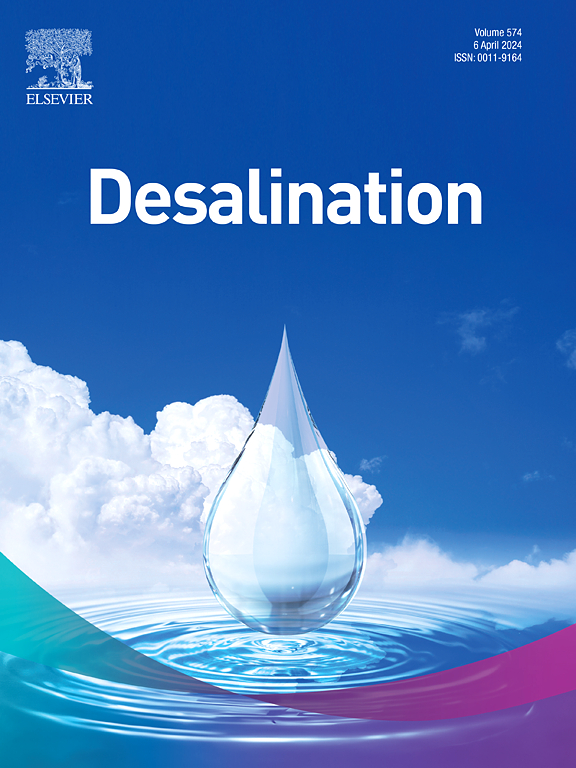Polyacrylonitrile-based block copolymer ultrafiltration membranes with enhanced antifouling and pollutants removal efficiency
IF 8.3
1区 工程技术
Q1 ENGINEERING, CHEMICAL
引用次数: 0
Abstract
Block copolymer-based porous materials have found extensive applications across a broad spectrum of industries. Their customized structures and scalable production capabilities have provided numerous possibilities to design membranes with precise separation properties. In this study, mPEGx-b-PAN block copolymers have been synthesized by incorporating mPEG of varying molecular weights in order to improve the selectivity and the antifouling properties of the resulting ultrafiltration membranes. Microphase separation within mPEG and PAN blocks was dependent on mPEG chain length and block concentration, ultimately leading to the controlled creation of pores in the mPEGx-b-PAN ultrafiltration membrane. Simultaneously, the surface layer thickness of the composite membrane was considerably reduced after adding the block copolymer. The optimized UF2000–1.0 membrane, prepared by blending 1 % mPEG2000-b-PAN with PAN, exhibited a high permeability of 340.75 ± 22.17 L m−2 h−1 bar−1 and a BSA rejection rate of over 99 %, effectively separating organic pollutants such as HA, CR, and CB-G250. Furthermore, antifouling tests showed that the mPEG2000-b-PAN/PAN composite membranes exhibited a gradual degradation of permeability during the antifouling stage, with high permeability recovery after backwashing. Therefore, mPEGx-b-PAN block copolymers demonstrate promising potential for membrane separation applications and pave the way for significant advancements in filtration technology.

求助全文
约1分钟内获得全文
求助全文
来源期刊

Desalination
工程技术-工程:化工
CiteScore
14.60
自引率
20.20%
发文量
619
审稿时长
41 days
期刊介绍:
Desalination is a scholarly journal that focuses on the field of desalination materials, processes, and associated technologies. It encompasses a wide range of disciplines and aims to publish exceptional papers in this area.
The journal invites submissions that explicitly revolve around water desalting and its applications to various sources such as seawater, groundwater, and wastewater. It particularly encourages research on diverse desalination methods including thermal, membrane, sorption, and hybrid processes.
By providing a platform for innovative studies, Desalination aims to advance the understanding and development of desalination technologies, promoting sustainable solutions for water scarcity challenges.
 求助内容:
求助内容: 应助结果提醒方式:
应助结果提醒方式:


